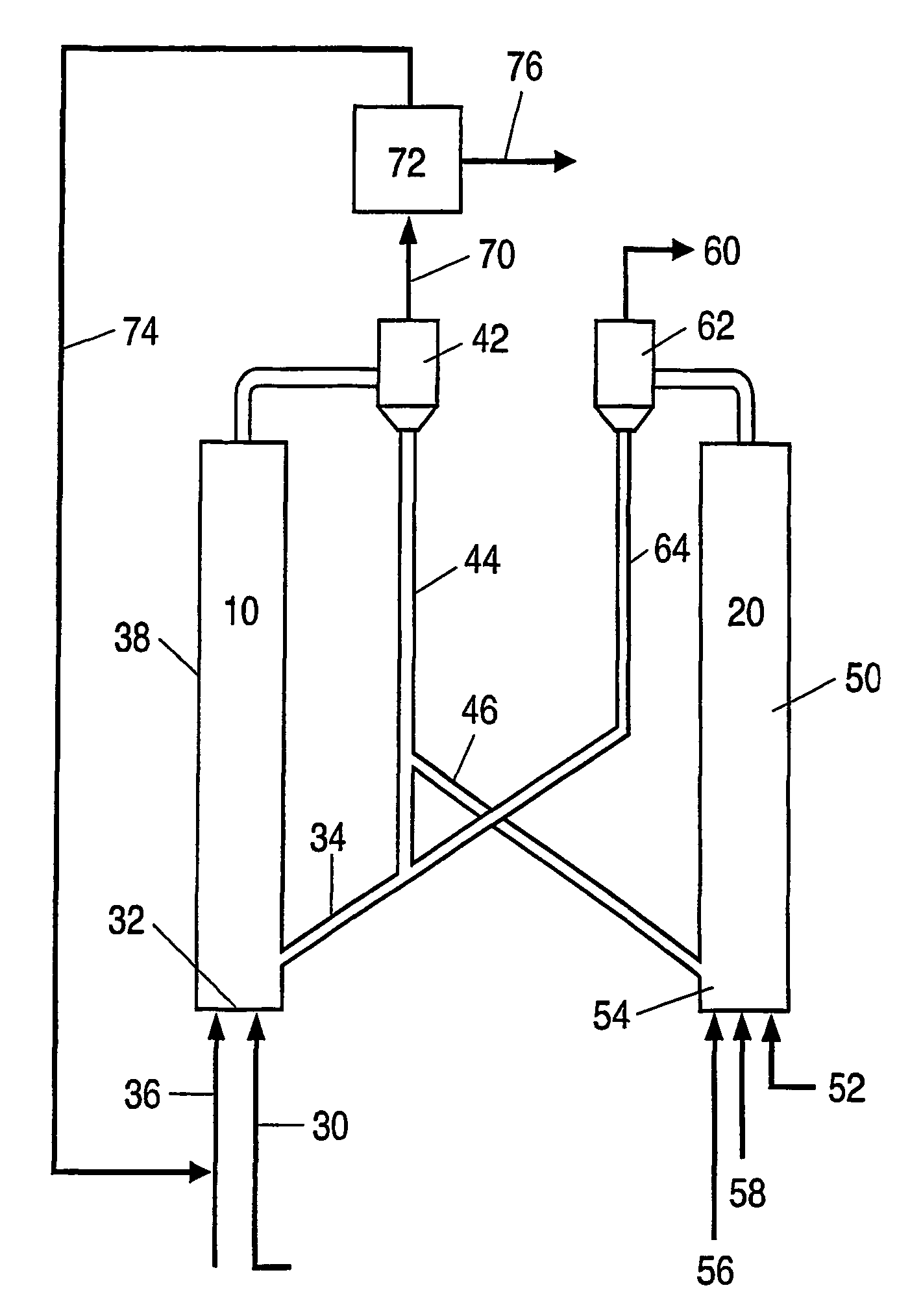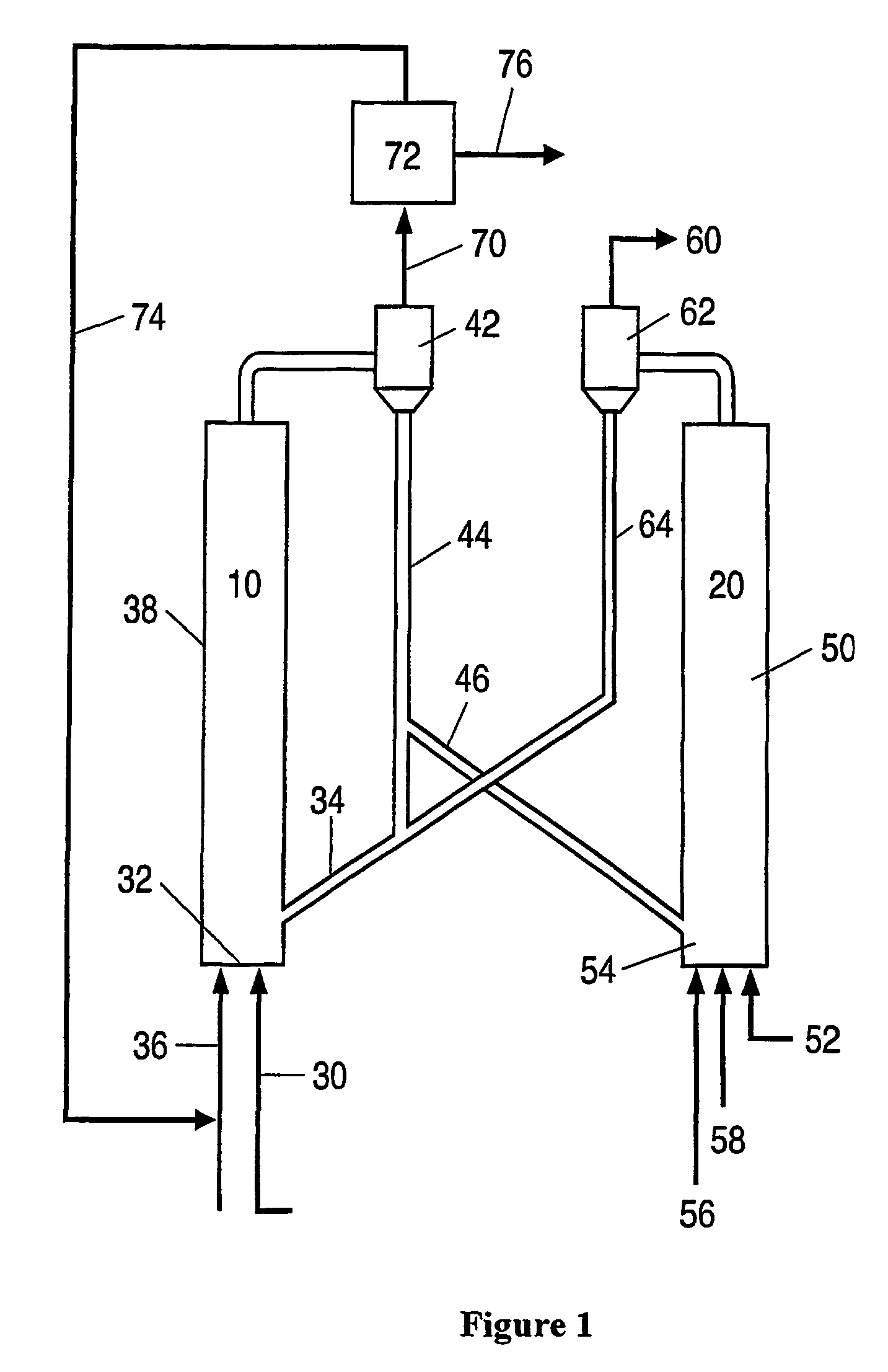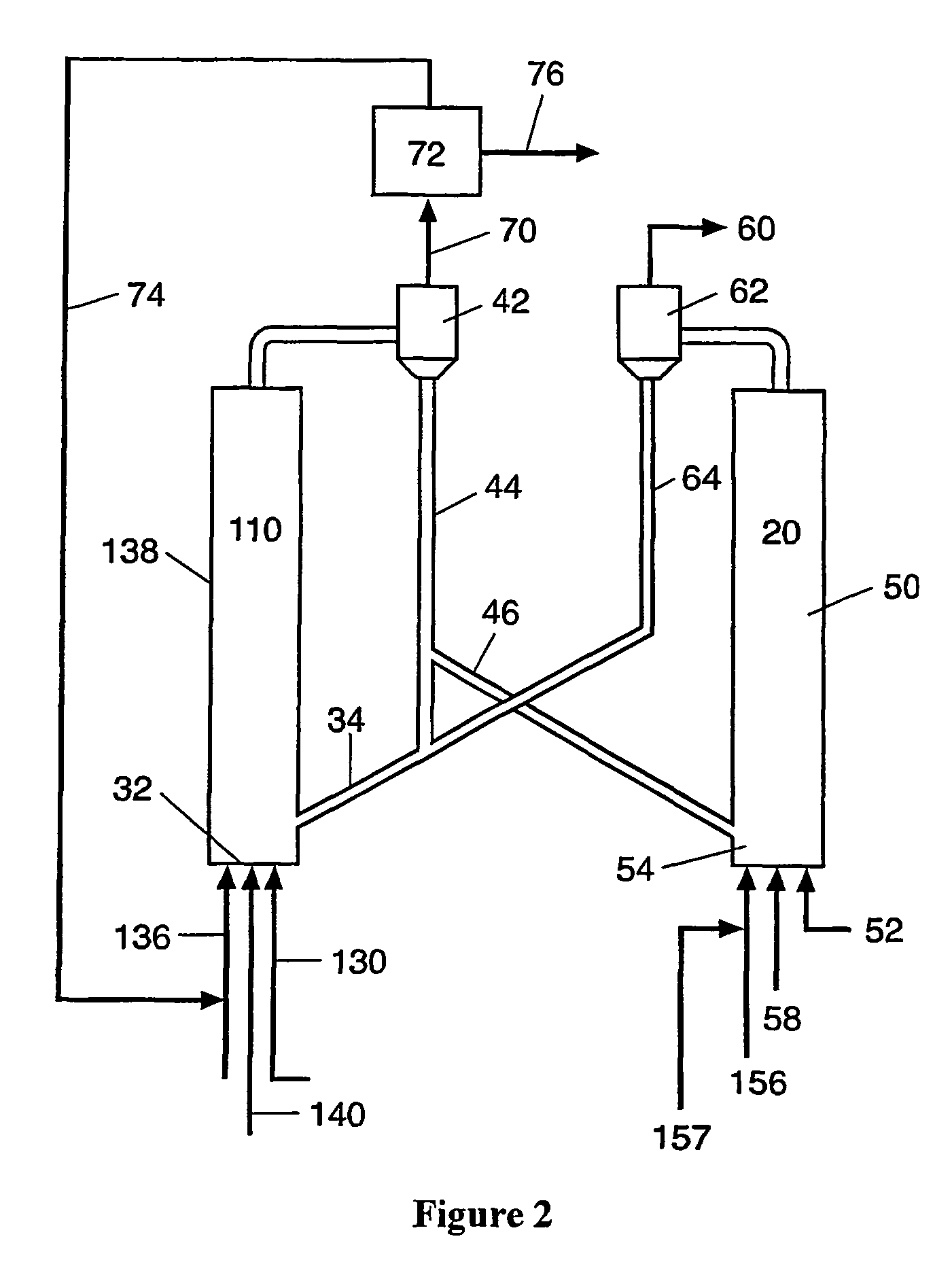Process for desulfurizing hydrocarbon fuels and fuel components
a technology of hydrocarbon fuel and desulfurization process, which is applied in the direction of cracking process, catalytic cracking, petroleum industry, etc., can solve the problems of relatively low purity of the hydrocarbon gas stream used in the process, and achieve the effects of high cost, substantial sulfur removal, and high cos
- Summary
- Abstract
- Description
- Claims
- Application Information
AI Technical Summary
Benefits of technology
Problems solved by technology
Method used
Image
Examples
example 1
[0065]A zinc titanate aluminate sorbent prepared according to Example 8 of PCT Application WO 99 / 42201 A1, published Aug. 26, 1999, having a weight of about 200 g was loaded into a 2 inch ID quartz reactor. This reactor was sealed in a stainless steel pressure shell. The system was pressurized to 50 psig and heated to 1000° F. in 4 SLPM (standard liters per minute) of nitrogen. The reactor effluent was used to continuously purge a sample loop for a Varian 3300 Gas Chromatograph fitted with a Sievers Model 355 sulfur chemiluminescence detector capable of detecting below 200 ppbv (parts per billion, volume) of sulfur.
[0066]The test was started by adjusting the flow to the reactor to 2 SLPM of hydrogen and 2 SLPM of a nitrogen mixture containing 200 ppmv (parts per million volume) each of ethyl-, propyl-, and butyl-mercaptan. At this time, HP ChemStation software was used to start a sequence designed to sample the reactor effluent at intervals of about 6 minutes. After 120 minutes, the...
example 2
[0072]The following testing sequence was used to screen the following sorbent materials (1) the zinc titanate aluminate of Example 1, (2) a zinc aluminate (prepared as set forth below), (3) alumina (commercially available), (4) zinc titanate, (5) a physical mixture of zinc titanate and alumina, (6) a physical mixture of zinc aluminate and zinc titanate, (7) a commercial, stabilized zinc oxide guard bed material, G72D, commercially available from Sud-Chemie Inc, and (8) ECAT, a silica based commercial FCC catalyst. The test began by loading 50 g of each sample into an 1 inch ID quartz reactor. The reactor was placed in a furnace with temperature control based on the temperature at the center of the sorbent bed. The quartz reactor was fitted with two feed inlets, a thermocouple well and effluent side arm. The reactor effluent was setup to continuously feed the sample loop of a Hewlett Packard (HP) 6890 GC fitted with a J&W GS GasPro column and a Sievers Model 355 sulfur chemiluminesce...
example 3
[0078]This example used the same microreactor system that was used in Example 2. An isooctane sample spiked with various sulfur compounds was used to mimic FCC naphtha (shown in Table 3). Tests were conducted with this mixture to determine the effectiveness of the zinc titanate aluminate sorbent used in Example 1 at 1,000° F. with and without H2. The results are shown in Table 3.
[0079]
TABLE 3Removal Of Various Sulfur Compounds From A SimulatedIsooctane Sample Using Zinc Titanate Aluminate SorbentWith And Without HydrogenProduct (ppmw)FeedTest 1Test 2Sulfur Compound(ppmw)Without H2With H2Ethyl Mercaptan159.80.00.0Carbon Disulfide217.74.70.0Isopropyl Mercaptan103.00.00.0Thiophene88.546.633.6Diethyl Sulfide74.14.30.02-Ethyl Thiophene62.054.743.6Diethyl Disulfide105.16.60.8Benzothiophene39.889.858.3Dibenzothiophene27.72.913.3TOTAL877.8209.6149.6% Removal76.182.9
[0080]Although not shown in Table 3, in each case the effluent was monitored for H2S, and no traces were found in any of the te...
PUM
| Property | Measurement | Unit |
|---|---|---|
| temperature | aaaaa | aaaaa |
| vapor residence time | aaaaa | aaaaa |
| pressures | aaaaa | aaaaa |
Abstract
Description
Claims
Application Information
 Login to View More
Login to View More - R&D
- Intellectual Property
- Life Sciences
- Materials
- Tech Scout
- Unparalleled Data Quality
- Higher Quality Content
- 60% Fewer Hallucinations
Browse by: Latest US Patents, China's latest patents, Technical Efficacy Thesaurus, Application Domain, Technology Topic, Popular Technical Reports.
© 2025 PatSnap. All rights reserved.Legal|Privacy policy|Modern Slavery Act Transparency Statement|Sitemap|About US| Contact US: help@patsnap.com



